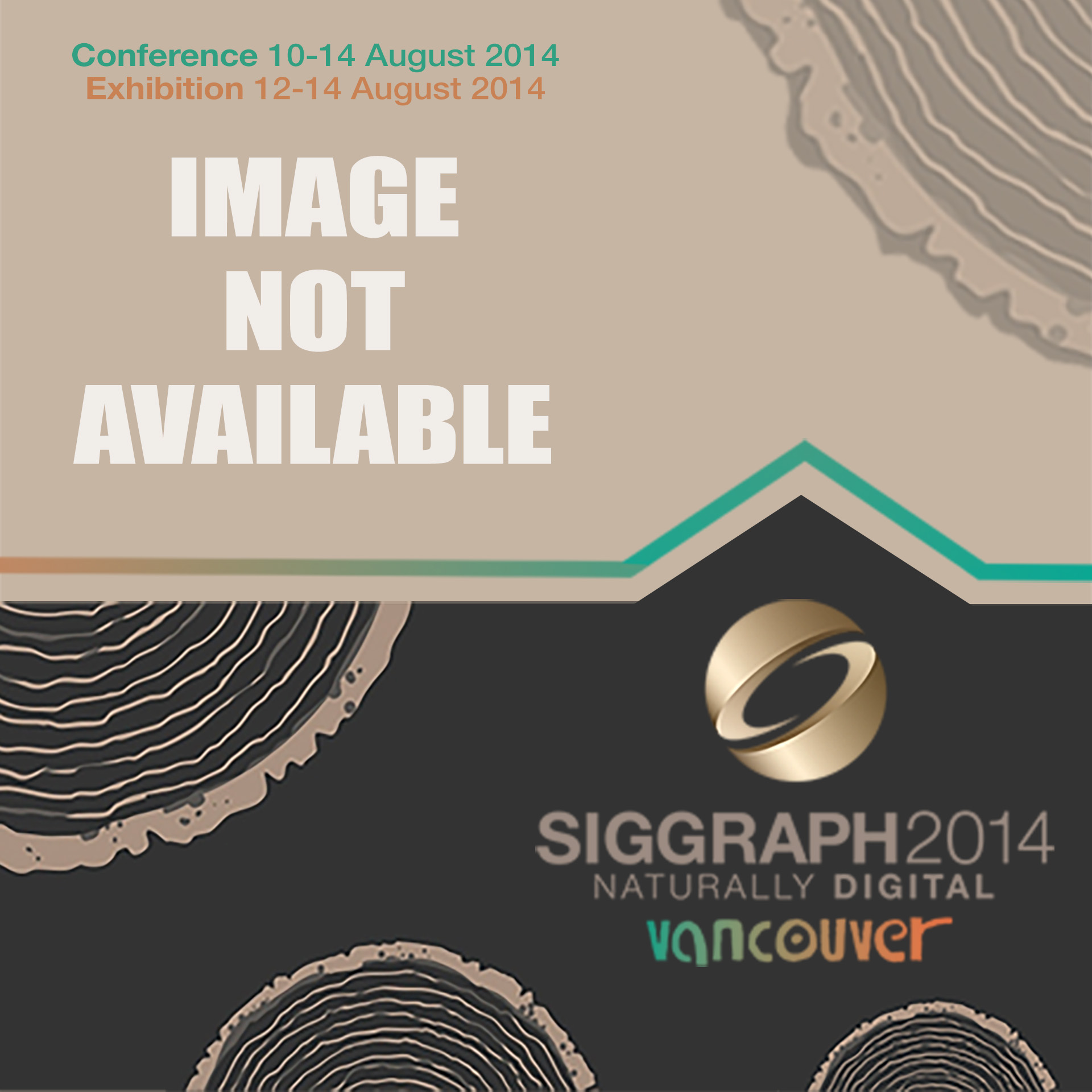“Extending the graphics pipeline with adaptive, multi-rate shading” by He, Gu and Fatahalian
Conference:
Type(s):
Title:
- Extending the graphics pipeline with adaptive, multi-rate shading
Session/Category Title: Hardware Systems
Presenter(s)/Author(s):
Moderator(s):
Abstract:
Due to complex shaders and high-resolution displays (particularly on mobile graphics platforms), fragment shading often dominates the cost of rendering in games. To improve the efficiency of shading on GPUs, we extend the graphics pipeline to natively support techniques that adaptively sample components of the shading function more sparsely than per-pixel rates. We perform an extensive study of the challenges of integrating adaptive, multi-rate shading into the graphics pipeline, and evaluate two- and three-rate implementations that we believe are practical evolutions of modern GPU designs. We design new shading language abstractions that simplify development of shaders for this system, and design adaptive techniques that use these mechanisms to reduce the number of instructions performed during shading by more than a factor of three while maintaining high image quality.
References:
1. Akeley, K. 1993. RealityEngine graphics. In Proceedings of SIGGRAPH 93, ACM Press / ACM SIGGRAPH, Computer Graphics Proceedings, Annual Conference Series, ACM, 109–116. Google ScholarDigital Library
2. Annen, T., Mertens, T., Seidel, H.-P., Flerackers, E., and Kautz, J. 2008. Exponential shadow maps. In Proceedings of Graphics Interface 2008, GI ’08, 155–161. Google ScholarDigital Library
3. Clarberg, P., Toth, R., and Munkberg, J. 2013. A sort-based deferred shading architecture for decoupled sampling. ACM Trans. Graph. 32, 4 (July), 141:1–141:10. Google ScholarDigital Library
4. Donnelly, W., and Lauritzen, A. 2006. Variance shadow maps. In Proceedings of the 2006 Symposium on Interactive 3D Graphics and Games, I3D ’06, 161–165. Google ScholarDigital Library
5. Fatahalian, K., Boulos, S., Hegarty, J., Akeley, K., Mark, W. R., Moreton, H., and Hanrahan, P. 2010. Reducing shading on GPUs using quad-fragment merging. ACM Trans. Graph. 29, 4 (July), 67:1–67:8. Google ScholarDigital Library
6. Foley, T., and Hanrahan, P. 2011. Spark: Modular, composable shaders for graphics hardware. ACM Trans. Graph. 30, 4 (July), 107:1–107:12. Google ScholarDigital Library
7. Guenter, B., Knoblock, T. B., and Ruf, E. 1995. Specializing shaders. In Proceedings of the 22nd Annual Conference on Computer Graphics and Interactive Techniques, ACM, SIGGRAPH ’95, 343–350. Google ScholarDigital Library
8. Guenter, B., Finch, M., Drucker, S., Tan, D., and Snyder, J. 2012. Foveated 3d graphics. ACM Trans. Graph. 31, 6 (Nov.), 164:1–164:10. Google ScholarDigital Library
9. Kircher, S., and Lawrance, A. 2009. Inferred lighting: Fast dynamic lighting and shadows for opaque and translucent objects. In Proceedings of the 2009 ACM SIGGRAPH Symposium on Video Games, ACM, Sandbox ’09, 39–45. Google ScholarDigital Library
10. Lauritzen, A. 2010. Deferred rendering for current and future rendering pipelines. In ACM SIGGRAPH 2010 Courses: Beyond Programmable Shading II. Available at http://bps10.idav.ucdavis.edu.Google Scholar
11. Liktor, G., and Dachsbacher, C. 2012. Decoupled deferred shading for hardware rasterization. In Proceedings of the ACM SIGGRAPH Symposium on Interactive 3D Graphics and Games, ACM, I3D ’12, 143–150. Google ScholarDigital Library
12. Nichols, G., Penmatsa, R., and Wyman, C. 2010. Interactive, multiresolution image-space rendering for dynamic area lighting. In Proceedings of the 21st Eurographics Conference on Rendering, Eurographics Association, EGSR’10, 1279–1288. Google ScholarDigital Library
13. NVIDIA Corporation. 2013. TXAA – Temporal Anti-Aliasing Technology. Available at http://www.geforce.com/landing-page/txaa/technology.Google Scholar
14. Olano, M., Kuehne, B., and Simmons, M. 2003. Automatic shader level of detail. In Proceedings of the ACM SIGGRAPH/EUROGRAPHICS Conference on Graphics Hardware, Eurographics Association, HWWS ’03, 7–14. Google ScholarDigital Library
15. Pellacini, F. 2005. User-configurable automatic shader simplification. ACM Trans. Graph. 24, 3 (July), 445–452. Google ScholarDigital Library
16. Penner, E. 2011. Shader amortization using pixel quad message passing. In GPU Pro2: advanced rendering techniques. A K Peters, Ltd., 349–367.Google Scholar
17. Proudfoot, K., Mark, W. R., Tzvetkov, S., and Hanrahan, P. 2001. A real-time procedural shading system for programmable graphics hardware. In Proceedings of the 28th Annual Conference on Computer Graphics and Interactive Techniques, ACM, SIGGRAPH ’01, 159–170. Google ScholarDigital Library
18. Ragan-Kelley, J., Lehtinen, J., Chen, J., Doggett, M., and Durand, F. 2011. Decoupled sampling for graphics pipelines. ACM Trans. Graph. 30, 3 (May), 17:1–17:17. Google ScholarDigital Library
19. Reeves, W. T., Salesin, D. H., and Cook, R. L. 1987. Rendering antialiased shadows with depth maps. SIGGRAPH Comput. Graph. 21, 4 (Aug.), 283–291. Google ScholarDigital Library
20. Scherzer, D., Yang, L., Mattausch, O., Nehab, D., Sander, P. V., Wimmer, M., and Eisemann, E. 2012. Temporal coherence methods in real-time rendering. Computer Graphics Forum 31, 8, 2378–2408. Google ScholarDigital Library
21. Shebanow, M., 2013. An evolution of mobile graphics. High Performance Graphics 2013 Keynote Address.Google Scholar
22. Sitthi-Amorn, P., Modly, N., Weimer, W., and Lawrence, J. 2011. Genetic programming for shader simplification. ACM Trans. Graph. 30, 6 (Dec.), 152:1–152:12. Google ScholarDigital Library
23. Tatarchuk, N., Tchou, C., and Venzon, J. 2013. Destiny: From mythic science fiction to rendering in real-time. In ACM SIGGRAPH 2013 Courses: Advanced in Real-Time Rendering in Games.Google Scholar
24. Vaidyanathan, K., Toth, R., Salvi, M., Boulos, S., and Lefohn, A. 2012. Adaptive image space shading for motion and defocus blur. In Proceedings of the Fourth ACM SIGGRAPH / Eurographics Conference on High-Performance Graphics, Eurographics Association, EGGH-HPG’12, 13–21. Google ScholarDigital Library
25. Yang, L., Sander, P. V., and Lawrence, J. 2008. Geometry-aware framebuffer level of detail. In Proceedings of the Nineteenth Eurographics Conference on Rendering, Eurographics Association, EGSR’08, 1183–1188. Google ScholarDigital Library





